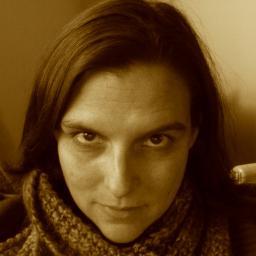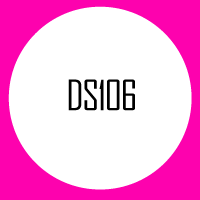



DS106: An Open, OnlineDigital Storytelling Course ds106.us Jim Groom, University of Mary Washington. http://ds106.us/
Based on the principle “a domain of one’s own,” the course connects registered students and open participants in an ever-evolving online community where they submit, complete and collaborate on assignments in writing, mashups, design, video, audio, and other media. ds106 lives online as a livestreaming radio station, a subreddit, a G+ group, a Twitter feed, and more.
The ds106 team – Jim Groom, Martha Burtis at the University of Mary Washington, and Alan Levine, held the interview on their TV station. This is a partial excerpt of that conversation.
Q: DS106 is a spinoff of a course that was originally offered at UMW and you’ve been doing this since 2010? What was the original idea?
Jim: The Basic idea was to give kids their own domain, their own web hosting and try and take them through what it means to think about narrative storytelling with all the different forms of social media, how they control some of it and how they can interrogate this platform of the web and think about their identity in some creative interesting ways.
Martha: I think it’s fair to say that a lot of this grew out of experiences that we had been having at UMW had dating back to 2004 where everyone in the division had gotten their own domain name and web hosting space, and it had changed the landscape of our work. This space became a place for narrating our own experiences and the process of learning. That grew into the notion that students could use the space to do that more broadly and more richly.
 Q: Why is it so important to have a domain of one’s own?
Q: Why is it so important to have a domain of one’s own?
Jim: Part of what Domain of One’s Own was for us is an experience of experimenting with a space, of building it, of imagining it, as a sandbox, but also as a vector of your thinking over time. Whether you need to do that in your own domain or not is a larger question that one could fight over, but understanding how the web works, how you can control these spaces, is essential in any institution of higher education, because this is a lot of the platform on which our world exists now.
Martha: We all live on the web to a greater and greater extent – every day, every month every year. And we don’t really interrogate what that means, and we don’t necessarily understand how the web works and how our identity is shaped in those spaces. We sort of blindly consume the latest social network – or, website-du-jour -, and set up our profiles. I greatly value that I have one space that bears my name, that I fully control. And when somebody searches for Martha Burtis, that’s gonna be probably the first or second hit they get.
Alan Levine: In addition, it’s also a matter of thinking of the web as a place not that we just travel about, but also we’re part of building. I mean, we’re adding to it, we’re reflecting on it, we’re kind of contributing our own personal perspective on it.
Martha: I do think that – not to be too metaphysical about it – I do think that when you name something, it becomes real.
Jim: I really like that metaphysical idea of the naming. It’s even Biblical, you know? It goes all the way back to language and how we understand ourselves…
I think that’s sometimes hard to get at, when you’re starting to focus on massive numbers and all that stuff – not that there isn’t some value there. But I think also that very kind of subtle relationship to the complexity of identity to the web and who we are, is something that is worth stopping [and reflecting] on in any discipline – no matter where you’re studying and working through and imagining. And – it’s cool because it also has very practical elements, like – students who take ds106 get jobs, because WordPress focuses on 20% of the sites on the web. We like that they get jobs. We don’t want them to be poor and hungry. But we also want them to have a metaphysical relationship to the web. And I love that – I’m stealing that now.
Q: Can you just enumerate the things that are a part of ds106? I mean, I know it is a hashtag, I know it is a radio station, I know it has a TV station, I know it has a lot of weird GIFs that pop up in different places. What are the tentacles?
Martha: The main hub of ds106 is the website ds106.us. .. So when we teach a credit-bearing course here at Mary Washington, we set up a space there where we’re putting up weekly assignments, and putting up information about our expectations for students, our syllabi -, and other people at institutions are free to do that as part of that site as well. But in addition, as you said, we have a lot of tentacles that have grown out. So we have – the assignment bank, which has been there since the start – which is a crowd-sourced, sort of digitally story-telling assignment bank that anybody can contribute an assignment to, or anybody can come along and do an assignment
We have the radio station, which was born about a month into the open online experience, and still is going strong. We have the TV station, although that kind of waxes and wanes, We have Inspire, which is a site that was created by some students here at Mary Washington, as a way to highlight some of the best work in the community. We have The Daily Create which was programmed initially by our colleague Tim Owens, and Alan has really taken the reins on it since then. We have the Remix Machine, which Alan built which kind of works with the assignment bank as a way to remix the assignments that have been submitted.
Various instantiations of the course have been taught as part of a larger narrative. So Jim did the Summer of Oblivion in 2011, Alan and I did Camp Magic McGuffinin 2012. http://magicmacguffin.info/And each of those sort of occupied ds106 in different ways.
Jim: They were really fun, because they were kind of like alternate reality storytelling as part of teaching the class. So you actually asked the students to – suspend disbelief, and have some fun with the class that were gonna be part of a narrative. It was an interesting way… and I think, that gets
to its best ideas. ds106 is [experimenting]to see what are the boundaries of online learning and how do we push them.
Q: How does the institution see the value of what’s happening with ds106?
Jim: It depends. We actually had a situation where ds106 [had] to be distinguished from cpsc106 the course that actually started it, because we had actually bought a Kickstarter for a server and some other things, and the money stuff started to get interesting.
Martha: What I would say is that much like many institutions, they don’t really know what to do with something like this, because this is so not like any other program that’s sort of designed or engineered or funded at our institutions, because it’s not meant to be that.
Q: How many people have been part of ds106 over the last few years?
Martha: as a joke a few years ago when “MOOC” was really becoming the word of the day, we put up a widget on ds106 when we wanted to figure out how ‘massive’ we were, so we asked everybody to tell us their weight anonymously, and then we calculated the total weight of ds106.
Alan:… there’s about 30,000 aggregated posts from over the last two years since 2011. And the interesting thing that I realized last night is that every time we add someone’s feed to the blog site, it creates a user for the feed. So there’s about 2500 user accounts. So that’s kind of a ballpark of how many people.
Jim: I always go back to the idea that rather than being massive, it’s fractal in some way. ..Opening up out, allowed us to start imagining how online courses could start modeling themselves on the web [itself], and modeling themselves on this open, kind of generative possibility for outside people; making your class that much better. Re-imagining your space as the center of the class as one guide that’s introducing everybody to a network, and that idea of this class moving into a network experience of participatory learning, where all these people around the web do amazing things and raise the bar for our students.
…it’s taken a lot of years for ds106 in some ways to emerge as something that’s both a course, but in many ways a community as well.
Posted in Uncategorized |
